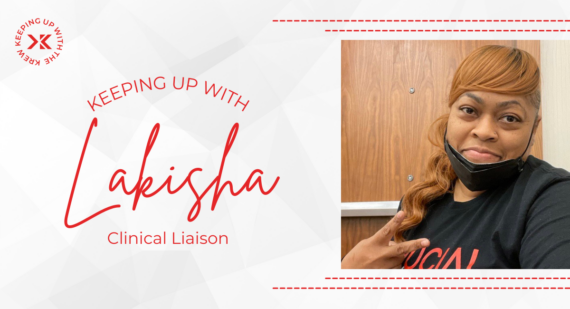
Decreasing Health Disparity Through Better Understanding
By: Ben Phelps
Health disparity is defined as health and healthcare differences between groups stemming from broader inequities. To address and increase health disparity awareness, April was made National Minority Health Month! While progress has been made in recent years, we still need to reach health equity for all communities. Health equity, defined as everyone having the opportunity to be as healthy as possible, is crucial to building happier and more prosperous communities. Krucial Rapid Response aims to increase health equity for areas and communities of all shapes and sizes. A great way to do that is by sharing information and improving public comprehension of current health disparities felt by minorities.
In 1915 Booker T. Washington paved the way for National Minority Health Month by establishing National Negro Health Week to bring awareness to the health disparities caused by poor working and living conditions affecting African Americans. This foundation led to the U.S. Congress resolving in 2002 that National Minority Health and Health Disparities Month should be established. Health equity has grown in the past two decades since this establishment, but there is still plenty of work to be done.
Insurance
Insurance, even at bare minimum coverage, is often a great asset to ensure individuals feel comfortable when making decisions regarding their care. Navigating insurance coverage can often be challenging, especially for individuals that do not speak English. Language, literacy, and education play factors in comprehending and acquiring proper insurance plans. A 2017 study found that insurance coverage gains for minority groups began reversing, and the number of uninsured people grew.
In 2017 around 7% of White people were uninsured, while Hispanic communities had 19% of their population uninsured. That same year, Black people had a rate of 11% uninsured, and American Indians and Alaskan Natives had the highest rate of uninsured individuals at 22%. Around 11% of Native Hawaiian and other Pacific Islander communities had an uninsured rate of 11%, the same as Black communities. As of 2021, the majority of the numbers have remained stagnant. These numbers also did not consider elderly populations.
Before 2017 each year, they had seen a steady drop in the number of uninsured people across all people groups. This was partly due to the implementation of Medicaid from the Affordable Care Act but also a result of marketplace expansions made possible in 2014.
Health Care Costs and Differences in Health Status
Stagnation of insurance rates aside, the cost of medical care is not going down, nor is the amount of money spent on health care. A 2015 study found that compared to men, women spend more on health care, especially during reproductive years. From ages 19 to 34, women, on average, spent $3,402 on health care while men spent only $1,891. Similarly, from ages 35-44, women spent $4,717 while men spent only $2,518. These increases in spending happened despite decreases in uninsured rates. Not only were costs higher, but as a result, women were 20% more likely to skip medical treatments or tests, while only 15% of men did.
Women are not the only minority group affected by increased costs over the past few years. In another study conducted by KFF in 2017, it was found that 22% of Hispanics went without care due to costs, while only 13% of Whites went without care. That same year nearly 46% of Hispanics went without a dental visit compared to 32% of Whites who went without a dental visit.
The health disparities experienced by minorities cause these significant differences. As mentioned, one such distinction is seen in recent decreased economic stability across all groups. Still, in addition to this, we also see disparities in the physical environment of minority populations, access to education, community, food security, and of course, quality health coverage. These differences can be seen plainly in the health status and conditions of minorities when compared to White populations. Both Hispanic and Black people reported higher rates of obesity, diabetes, and asthma when compared to White populations. When examining mental health, as of 2021, adults in White populations were between 13% and 27% more likely to receive mental health services when compared to all other minorities.
Pandemic and Mortality
The differences in health status, mortality rates, and access to quality care can be seen in many more figures across multiple studies for multiple minority groups, but the COVID-19 Pandemic exacerbated this. Black people are more than 2.5 times more likely to be hospitalized after a COVID-19 infection when compared to White people. This translates to Black people being 1.7 times more likely to die from Coronavirus than White people. In many cases, these higher rates can be attributed to industries minorities work in. 24% of Blacks and Hispanics are employed in service industries compared to 16% of whites. Due to the pandemic, the world saw decreased life expectancy, but minorities felt this more. In 2020 overall life expectancy dropped by 1.5 years; Native American people lost an average of 4.5 years, Black and Hispanic populations lost three years, and White populations lost only 1.2 years of their average life expectancy.
These higher death rates are not only seen in the Pandemic. While cancer mortality rates have fallen in recent years, Black people continue to have the highest cancer mortality rates, as seen in a 2018 study. Some of the previously mentioned disparities in health also contribute to higher mortality rates. For instance, Black women are three times more likely to die from a pregnancy-related concern when compared with White women.
Getting Involved with Decreasing Health Disparity
No one person can individually rid the world of health disparities; however, everyone can play a part in decreasing health disparity. One simple way to help is to increase cultural understanding and awareness of different groups. The theme for this year’s National Minority Health Month is Better Health Through Better Understanding. Increasing awareness of disparity by sharing information with others or learning more about disparity on your own are great ways to help make the world healthier and happier.
By increasing the nation’s health literacy, we increase the nation’s understanding of programs and organizations, such as Krucial Rapid Response, created to help communities grow and ensure all people are cared for. In addition, we also can understand how topics like transportation, language, technology access, and more affect health disparity in all groups, especially minority groups. Learning more about creating health equity and taking time to spread awareness not only helps others but also shows that you care.
Want to contribute to the Krucial Kollective? Email us at marketing@krucialstaffing.com and let us know what you want to write!



